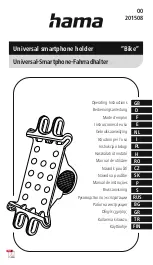
1-1
Rev 2.2, 10/31/94
-4 -2
3
2 CLIP
-9 -6
-20 -12
6
18
12
4
-24
24
PRESETS
SAVE
COMPARE
LOAD
EDIT
LEAVE
SYSTEM
GLOBAL
BYPASS
OUTPUT
MIDI
DEPTH
PAN
GAIN(dB) /
GAIN REDUCTION (dB)
OUTPUT HEADROOM (dB)
DELAY
DELAY(mS)
MIX
RATE
FILTER
ATTACK(mS)
DYNAMICS PROCESSING
COMPRESS
RATIO(X:1)
AGC
FREQ(kHz) /
THRESH(dB)
RELEASE(mS)
DS
LEVEL(dB)
NR
BAND 3
BP
BAND 2
BP
PARAMETRIC EQ
HIGH
WIDTH(Oct)
FREQ(kHz)
EXPANDER
CLIP
4
3
12
6
2
+4
-10
50
LINE
24
18
48
36
0
IN / SYNC
DIGITAL
MIC
INPUT HEADROOM (dB)
INPUT LEVEL CONTROL
LOW
BAND 1
BP
FEEDBACK
MODULATION
1. Introduction
The Symetrix 601 Digital Voice Processor is a single-channel digital voice processor intended for
use in a variety of recording, broadcast, live sound and post production applications. Acting as
a "bridge" between the analog and digital domains, the 601 accepts microphone or line level
analog signals, converts them to 18-bit digital (44.1 kHz or 48 kHz sample rates), performs 24-
bit digital signal processing, and sends them on their way via the digital and analog outputs.
The 601 uses two Motorola DSP-56001 digital signal processors (DSP) for an overall processing
rate of 40 million instructions per second (40 MIPS).
The 601 has inputs and outputs accommodating all common analog and digital formats. The
following table lists all of the inputs and outputs.
Input
Mode
Output
Mode
Microphone
A
Line (x2)
A
Line
A
AES/EBU
D
AES/EBU
D
S/PDIF
D
S/PDIF
D
The microphone and line inputs may be used individually or mixed. The input and output
modes are separate; you can use almost any combination of the analog and digital outputs
simultaneously (for example, the AES/EBU and S/PDIF digital
outputs
cannot be used
simultaneously).
While the 601 works great for voice (singing or monologue/dialogue) enhancement, its powerful
digital engine works wonders on any signal. Processing includes fully parametric EQ, shelving
EQ, notch filtering, dynamic noise filtering, de-essing, delay (first reflection), stereo synthesis,
gating, expansion, compression, and AGC (automatic gain control). Get the picture?
One aspect of many digital processors is the difficulty of use. The 601 was designed to be easy
to use, yet powerful. There are no menus to scroll through. Each parameter is visible via the
front panel push-switches. Pressing a switch transfers the display to that parameter's current
value. The parameter wheel allows you to change the value. Finally, the 601 allows you to
compare your stored setting with the current (edited) setting, without committing the edited
settings to memory.
Of course, all this processing power can be remotely controlled via MIDI. The 601's MIDI
implementation includes simple program change as well as parameter editing.
All analog inputs and outputs are available via XLR connectors. The AES/EBU digital inputs
and outputs use XLR connectors and the S/PDIF digital inputs and outputs use RCA
connectors. The MIDI input and output connections use standard 5-pin female DIN connectors.
The 601's unique set of digital tools can make voices, instruments, or sound effects jump out of
any mix.; Its combination of factory presets and non-volatile user program space guarantee
predictable and repeatable effects from session to session, performance to performance.
We recommend that you read this manual from cover to cover. Somewhere between the
confines of the two covers you should find the answers to most (98%) of your questions, both
technical as well as musical.
If you're in a hurry (like most of us), or if you really don't believe that someone could write a
decent owners manual that you can read and understand, then do us both a favor and read the
Summary of Contents for 601
Page 46: ...4 18 Rev 2 2 10 31 94 This page is blank believe it or not ...
Page 48: ...4 20 Rev 2 2 10 31 94 Notes ...
Page 50: ...5 2 Rev 2 2 10 31 94 Notes ...
Page 70: ...7 16 Rev 2 2 10 31 94 Notes ...
Page 72: ...8 2 Rev 2 2 10 31 94 Notes ...
Page 74: ...9 2 Rev 2 2 10 31 94 Notes ...
Page 78: ...11 2 Rev 2 2 10 31 94 Notes ...
Page 126: ...D 12 Rev 2 2 10 31 94 Notes ...
Page 138: ...G 8 Rev 2 2 10 31 94 Notes ...










































